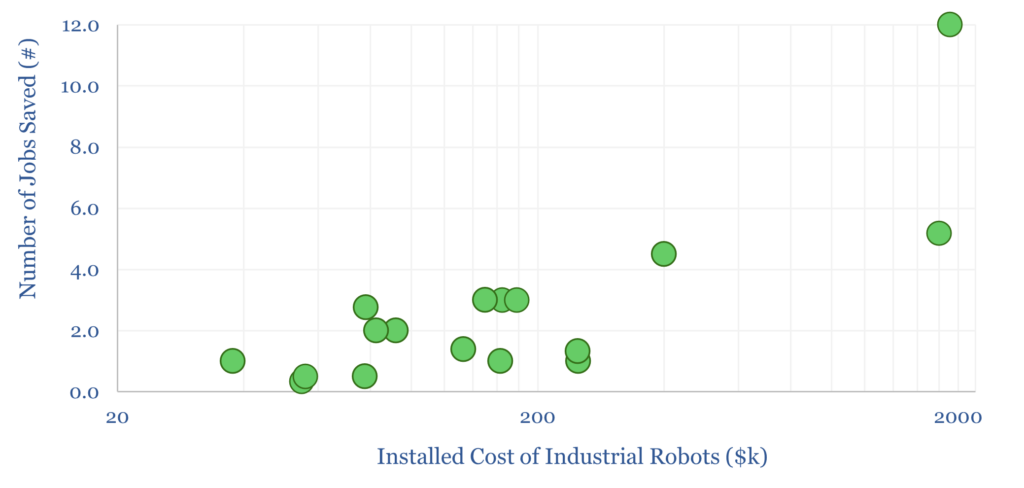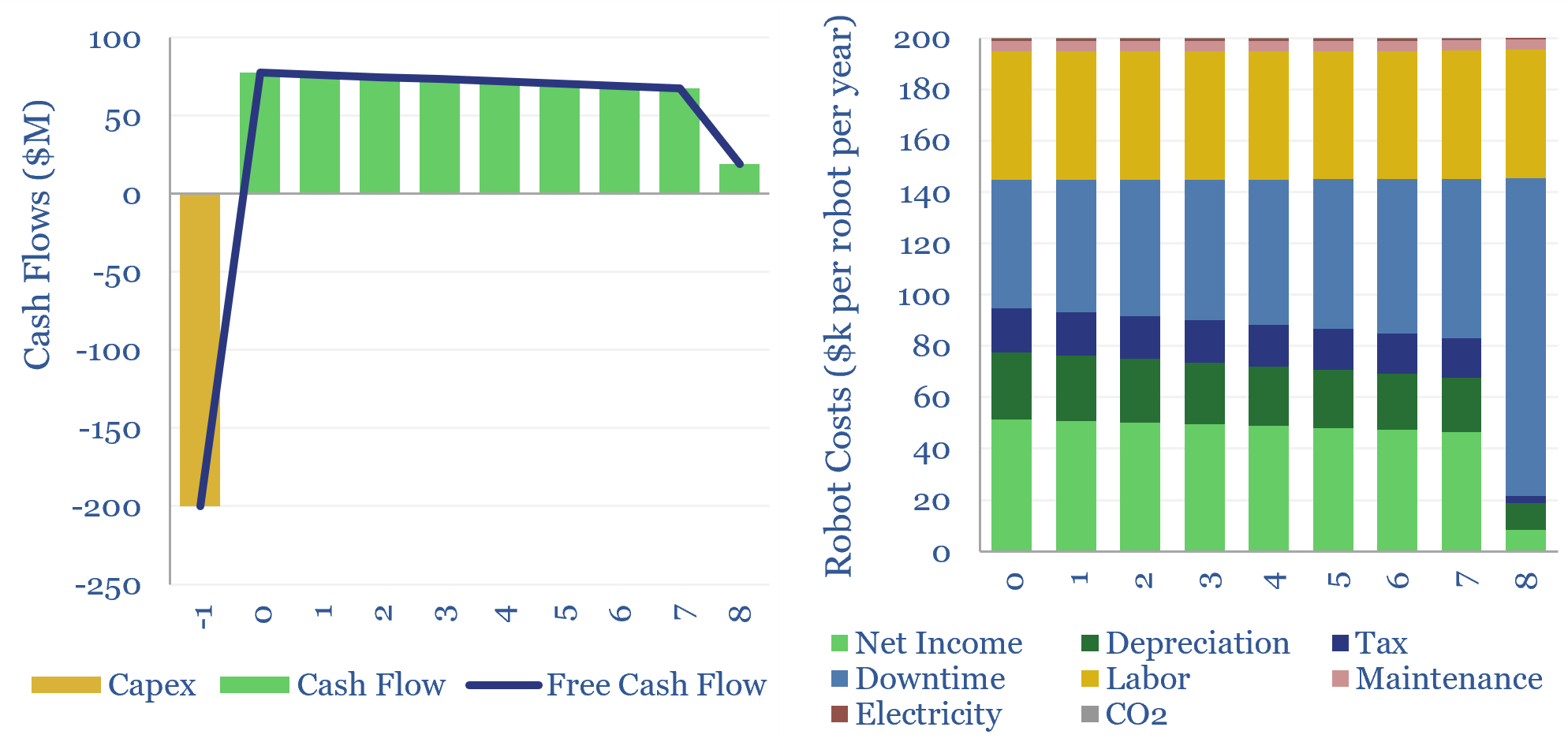There are 5M industrial robots deployed globally. A typical industrial robot costs $130k to install, does incur costs to run, but displaces 1.3 FTE jobs, saves 50% total costs, and thus achieves a payback of 1.5-years and a project-level IRR of 65%. This data-file captures the economics of deploying industrial robots.
There is a possibility that the rise of AI, machine vision, sensors and trade tensions will accelerate industrial robotics, as the capabilities of systems rise, while there is also more demand to re-shore strategic supply chains. We have recently screened leading companies in robotics.
5M industrial robots are already deployed globally to perform tasks ranging from palletizing products at the end of assembly lines, to painting, welding, de-burring, sealing, smoothing, screw-tightening.
To bring it to life, we have tabulated over 20 case studies in this data-file. In one example, an industrial robot was trained to tie ribbons and bows around chocolate boxes (sparing manual workers from having to tie 1,000 ribbons and bows per 10-hour shift, which is monotonous work that eventually leads to carpal tunnel syndrome).

In the average robotics case study, an industrial robot costs $130k to deploy. Each $100k of capex saved/spared one full time employee role. The average process saving was 50%. The average payback from deploying industrial robots was 1.5-years. Details from our case studies are in the data-file.
Based on these numbers, the IRR on deploying an industrial robot will reach 60%. It makes strong economic sense to deploy industrial robots, wherever they have the capability to displace human labor at a cost of around $100k per FTE displaced. The main limit is robot capability.
The economic returns from deploying industrial robots can also be stress-tested based on data from the companies and in our case studies. The ‘Sensitivities’ tab shows how payback periods and robot-level IRRs vary as a function of wage rates, robot capex costs and FTE roles displaced.
